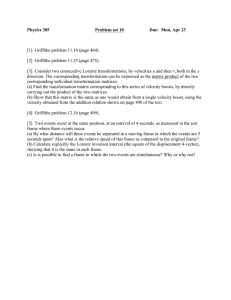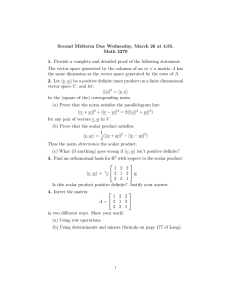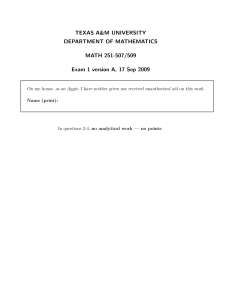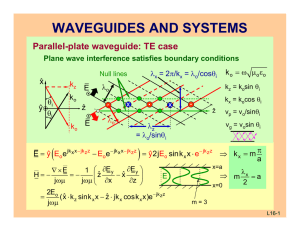Physics 305 Problem set 7 Due: Monday, March 26
advertisement
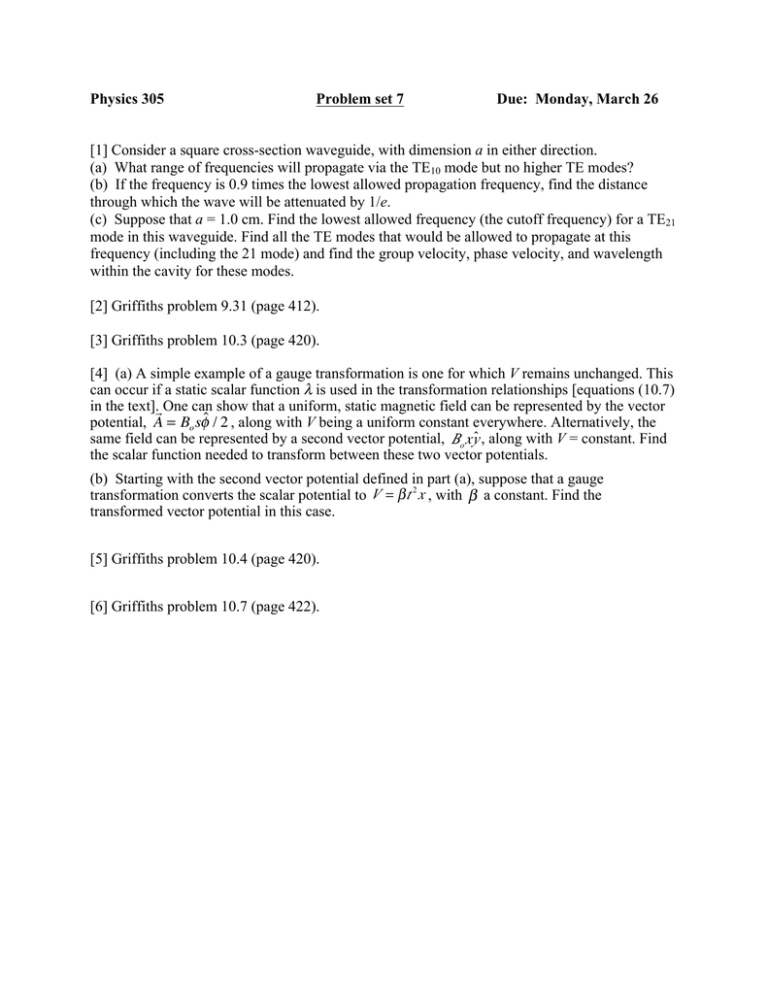
Physics 305 Problem set 7 Due: Monday, March 26 [1] Consider a square cross-section waveguide, with dimension a in either direction. (a) What range of frequencies will propagate via the TE10 mode but no higher TE modes? (b) If the frequency is 0.9 times the lowest allowed propagation frequency, find the distance through which the wave will be attenuated by 1/e. (c) Suppose that a = 1.0 cm. Find the lowest allowed frequency (the cutoff frequency) for a TE21 mode in this waveguide. Find all the TE modes that would be allowed to propagate at this frequency (including the 21 mode) and find the group velocity, phase velocity, and wavelength within the cavity for these modes. [2] Griffiths problem 9.31 (page 412). [3] Griffiths problem 10.3 (page 420). [4] (a) A simple example of a gauge transformation is one for which V remains unchanged. This can occur if a static scalar function λ is used in the transformation relationships [equations (10.7) in the text].! One can show that a uniform, static magnetic field can be represented by the vector potential, A = Bo s!ˆ / 2 , along with V being a uniform constant everywhere. Alternatively, the same field can be represented by a second vector potential, Bo x ŷ , along with V = constant. Find the scalar function needed to transform between these two vector potentials. (b) Starting with the second vector potential defined in part (a), suppose that a gauge transformation converts the scalar potential to V = !t 2 x , with ! a constant. Find the transformed vector potential in this case. [5] Griffiths problem 10.4 (page 420). [6] Griffiths problem 10.7 (page 422).

